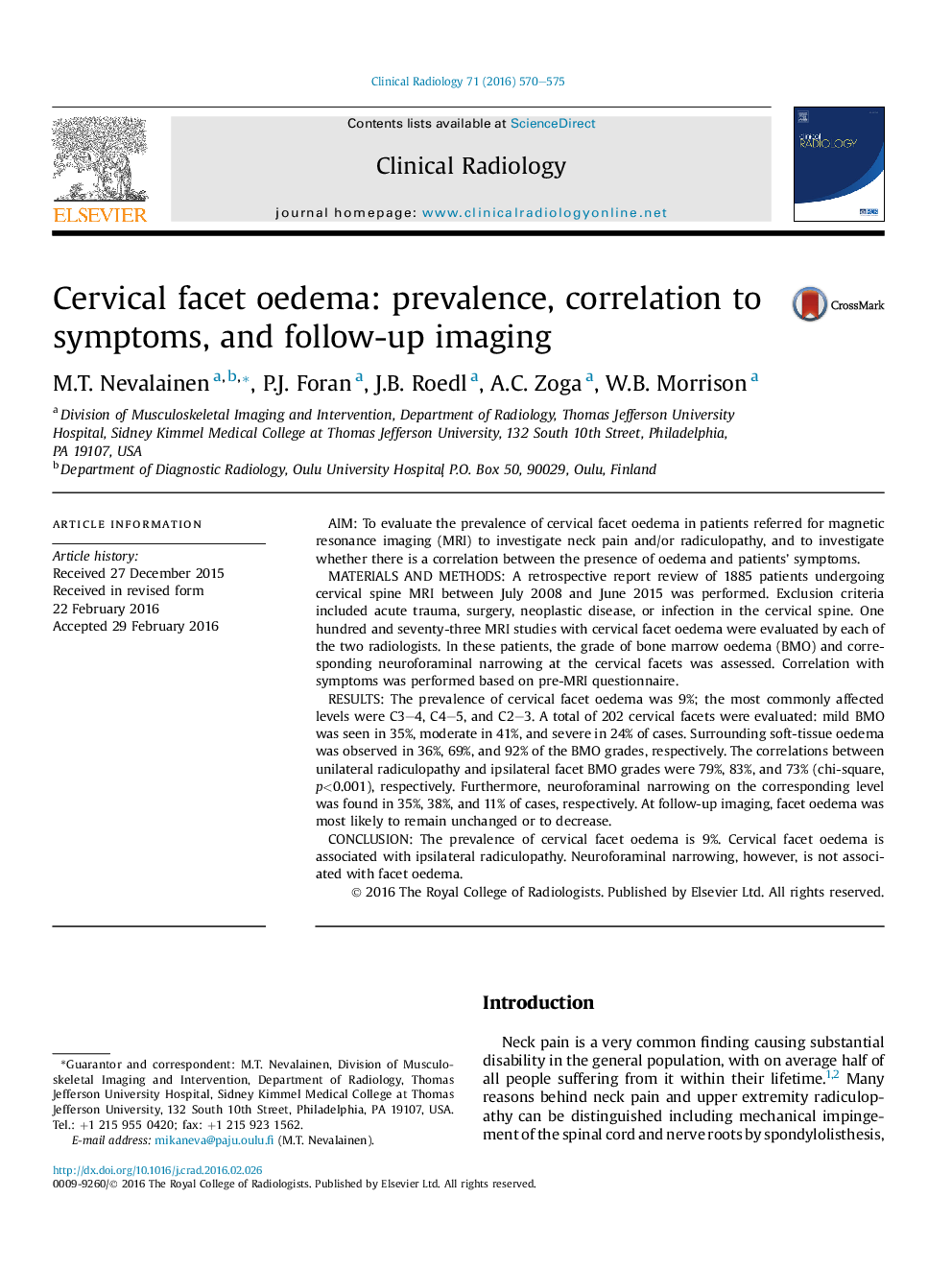| Article ID | Journal | Published Year | Pages | File Type |
|---|---|---|---|---|
| 3981327 | Clinical Radiology | 2016 | 6 Pages |
•Association between the cervical facet oedema and cervical radiculopathy was studied.•Prevalence of the cervical facet oedema was 9%.•Facet oedema was associated with radiculopathy regardless of the degree of oedema.•Neuroforaminal narrowing was not associated with the facet oedema.•On follow-up MRI, cervical facet oedema usually decreased or remained unchanged.
AimTo evaluate the prevalence of cervical facet oedema in patients referred for magnetic resonance imaging (MRI) to investigate neck pain and/or radiculopathy, and to investigate whether there is a correlation between the presence of oedema and patients' symptoms.Materials and methodsA retrospective report review of 1885 patients undergoing cervical spine MRI between July 2008 and June 2015 was performed. Exclusion criteria included acute trauma, surgery, neoplastic disease, or infection in the cervical spine. One hundred and seventy-three MRI studies with cervical facet oedema were evaluated by each of the two radiologists. In these patients, the grade of bone marrow oedema (BMO) and corresponding neuroforaminal narrowing at the cervical facets was assessed. Correlation with symptoms was performed based on pre-MRI questionnaire.ResultsThe prevalence of cervical facet oedema was 9%; the most commonly affected levels were C3–4, C4–5, and C2–3. A total of 202 cervical facets were evaluated: mild BMO was seen in 35%, moderate in 41%, and severe in 24% of cases. Surrounding soft-tissue oedema was observed in 36%, 69%, and 92% of the BMO grades, respectively. The correlations between unilateral radiculopathy and ipsilateral facet BMO grades were 79%, 83%, and 73% (chi-square, p<0.001), respectively. Furthermore, neuroforaminal narrowing on the corresponding level was found in 35%, 38%, and 11% of cases, respectively. At follow-up imaging, facet oedema was most likely to remain unchanged or to decrease.ConclusionThe prevalence of cervical facet oedema is 9%. Cervical facet oedema is associated with ipsilateral radiculopathy. Neuroforaminal narrowing, however, is not associated with facet oedema.
